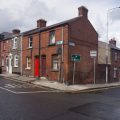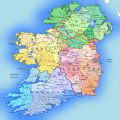
Homelessness
6 Sep 2017Key Point
Almost 7,000 people were homeless on Census night in 2016; one quarter were children, and over 70 per cent were in Dublin1 .
Introduction
There were 6,906 homeless people in the State in April 2016. There were 1,720 children within families that were homeless. Table 1 shows the number of homeless across the nine regions of the country in Census 2016.
Table 1 – Homeless persons by region, No. and % Share (Source: CSO (2017), Census 2016 – Homeless Persons in Ireland)
(Source: CSO (2017), Census 2016 – Homeless Persons in Ireland)
The Dublin region had 5,009 homeless people (72.5% of the total). This was followed by the South West with 471 (6.8%), Mid West with 396 (5.7%), and the South East with 323 (4.7%).
The Economic and Educational Status of Homeless Persons
Some key points:
- Of the 5,212 homeless persons aged 15 and over who were homeless in Census 2016, 2,915 (56%) were in the labour force, of whom 899 (31%) were employed.
- The unemployment rate among homeless persons (2,016) was 69% (general population 13%).
- The share of the homeless population unable to work due to permanent sickness or disability (11.6%) was almost three times that of the general population (4.2%).
- The share of homeless that were students was 8.2%, those looking after home/family (7.6%), retired (3.6%), and other (3.6%).
- Single parent families with children had the lowest employment rate (24%) among homeless persons, compared to among those in non-family units (33%).
- Among those whose full-time education had ended (4,198), 22.7% had upper secondary education, 19.8% had lower secondary, 13.8% had primary, 10.1% had third level, 4.6% had no formal education, and 28.9% did not state their educational level.
- The disability rate among the homeless (27%) was double that of the general population (13.5%).
Homeless Accommodation
Census 2016 enumerated people in homeless accommodation on Census night. Figure 1 shows the breakdown by category of accommodation.
Figure 1 – Homeless Accommodation by Category, % Share
(Source: CSO (2017), Census 2016 – Homeless Persons in Ireland)2
Figure 1 illustrates that private emergency accommodation (commercial hotels and B&Bs) accounted for the largest share (42.6%) of homeless accommodation, followed by supported temporary accommodation (40.4%)3 , and temporary emergency accommodation (11.5%)4 .
Financial Cost
The financial cost of homelessness was just under €119 million in 2016. Table 2 shows expenditure across five categories as reported by local authorities.
Table 2 – Spending on Homelessness by Category, 2016

Table 2 shows that actual spending on homelessness last year was €7.2m or 5.7pc below initial projections. The majority of this underspend (81pc) was linked with emergency accommodation expenditure (category 2) – amounting to €5.8m less than anticipated – with total spending of €85.5m. The largest percentage variance in spending outturn versus projection was 11.4% in ‘homeless prevention, tenancy sustainment and resettlement supports’ (category 1), where expenditure reached €8.75m.
_____________________________
Notes:
1 As of July 2017, there were 8,160 homeless persons (DHPLG).
2 Note: 123 rough sleepers are omitted from these figures.
3 Supported temporary accommodation includes hostels, with onsite professional support.
4 Temporary Emergency Accommodation is emergency accommodation with no (or minimal) support.






